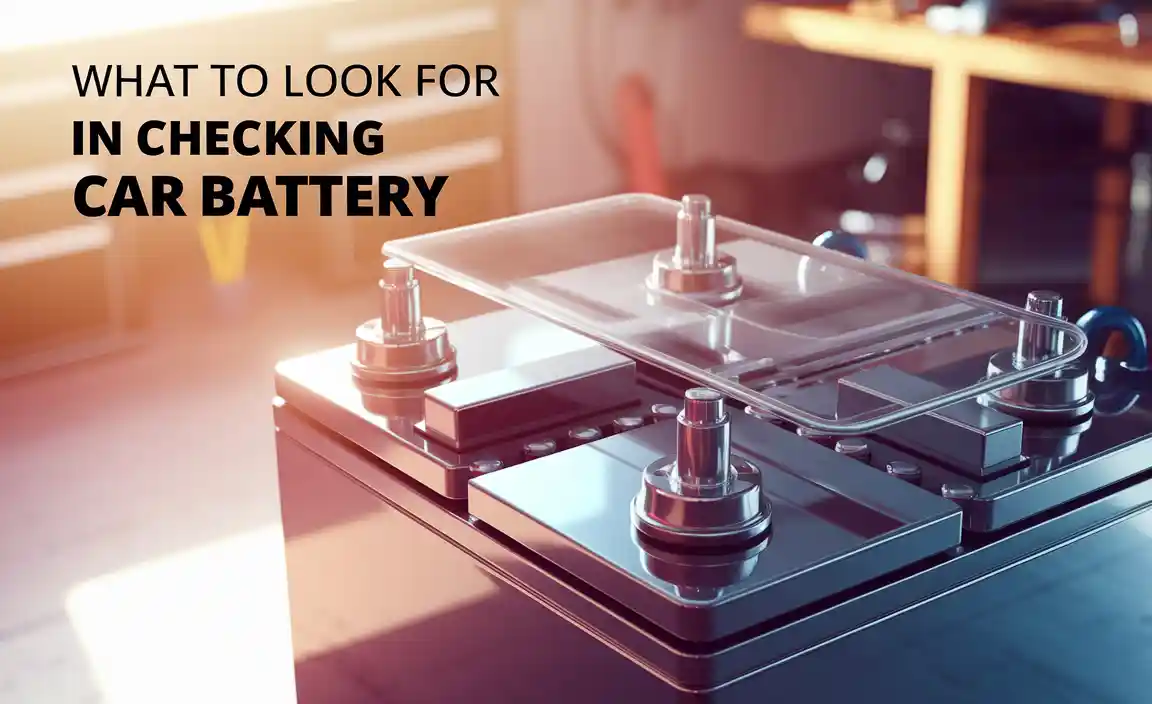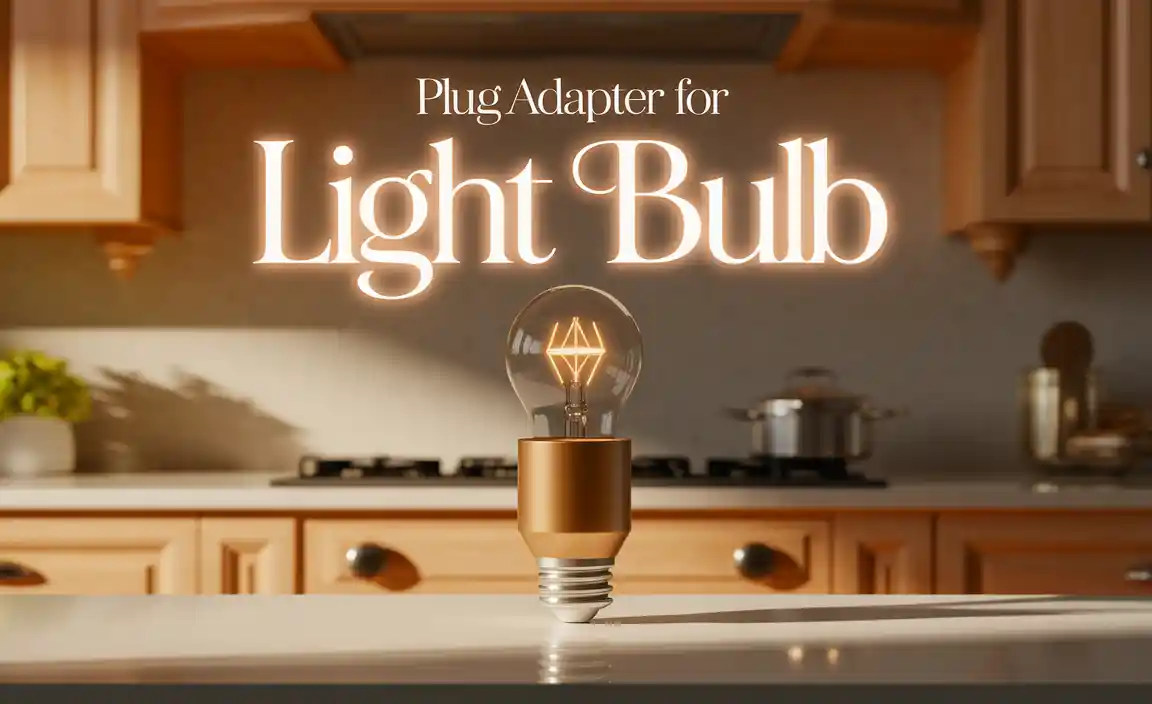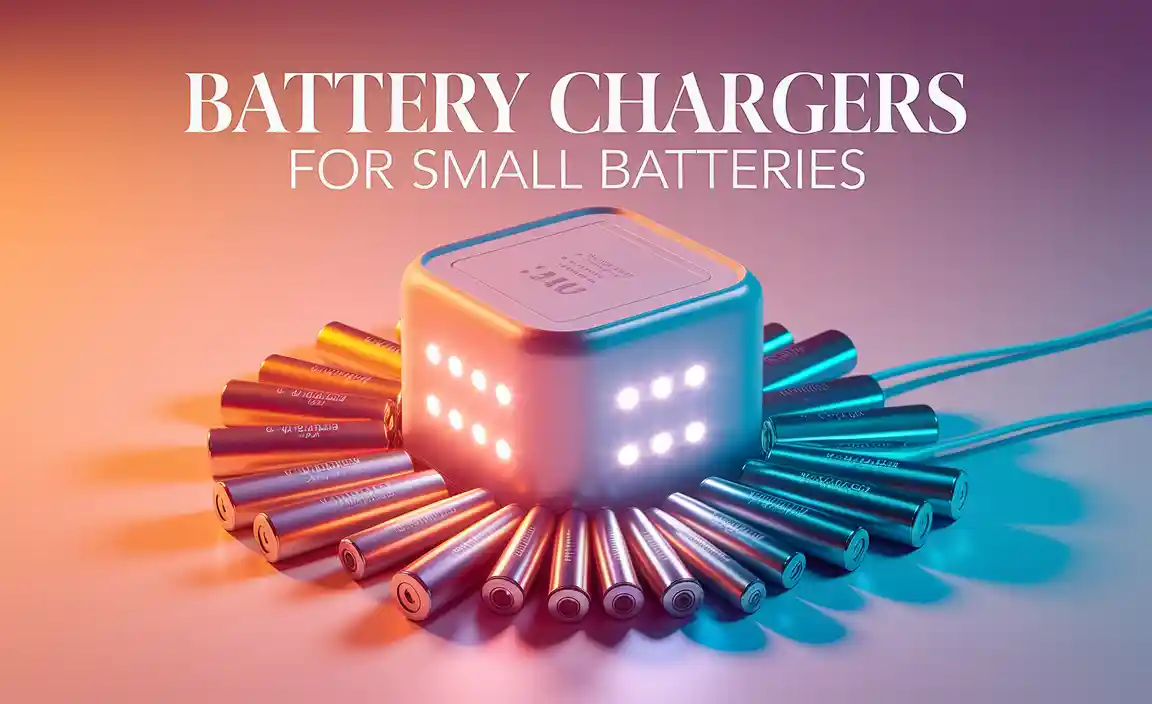An improper charging method or a charger can ruin the battery life and cause issues like overheating and overcharging. Currently, there are different types of procedures when it comes to charging your batteries. And you have to choose among these procedures as per your requirement, considering types of battery, voltage level, operation, etc.
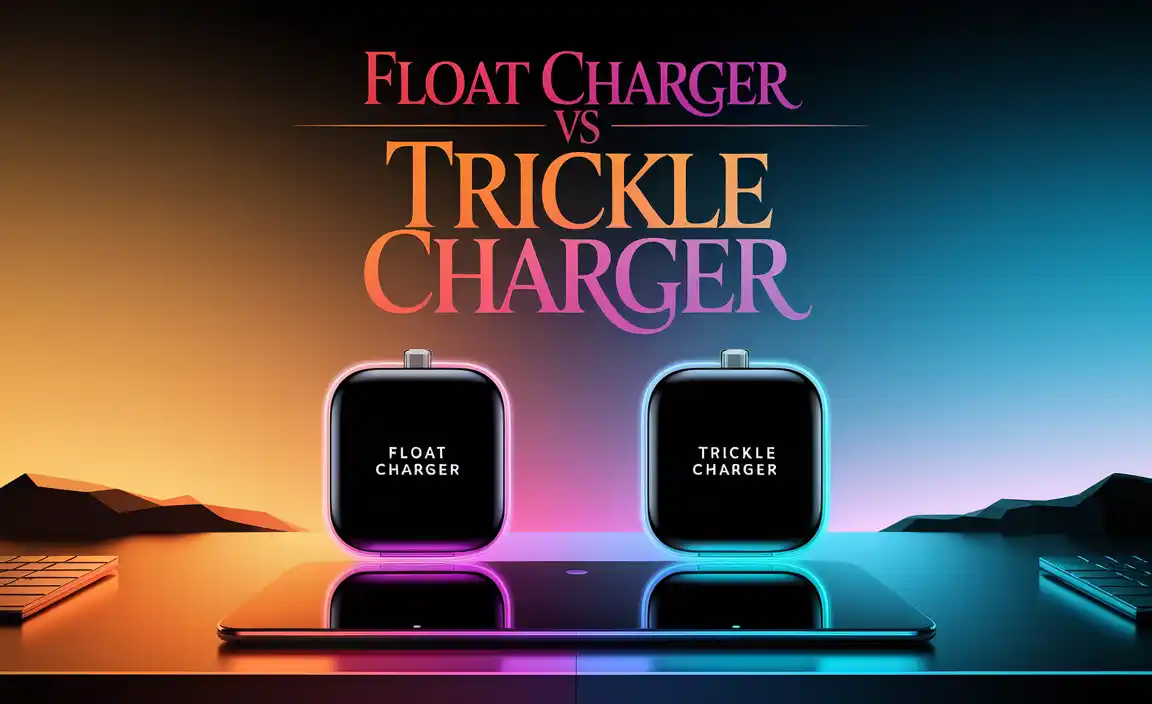
When it comes to the Float Charger vs Trickle Charger, the trickle charge is a bit old-fashioned with its backdated technology as it keeps charging a battery, regardless the battery is compatible or not. On the other hand, the float charger is pretty advanced with its circuitry and all. So there is almost no risk when it comes to battery health.
Float Charger vs Trickle Charger
Among the prevalent charging procedures- Float chargers, Trickle chargers and Boost chargers are the most popular and advantageous to the users. Here we are going to highlight some of the important facts about float chargers and trickle chargers that you can use to increase the efficiency, reliability, and smooth performance of the battery.
What is Float Charging?
[aawp box=”B013XRK9H0″ description=”none” template=”horizontal”]
Right now, float charging, also known as maintainer, is one of the most common charging methods. And this type of charger charges your battery with the principle of maintaining float voltage. Here, float voltage means the minimum voltage which the charger applies to the battery even when the battery is fully charged.
The float voltage is much lower than the maximum charging voltage of your battery. This is how the float charger saves your battery from overcharging. However, with a float charger, the battery always remains in a charged condition.
Hence, the float charging method is used in emergency conditions or for backup power. In this particular charging method, the charger, load, and battery are all joined parallelly.
As a result, the battery collects power through the charger from the main source and at the same time, the battery gets charged. But when the power is not available from the main source, the load draws power from the battery itself.
Advantages of Float Charger
- For emergency or backup purposes, this type of charging is the best.
- The battery, load, and charger are parallelly connected, so there should be no power interruption when the load is concerned.
- Float charger works on a reduced voltage at a constant current. As a result, the battery lasts for a long period.
- There is almost no risk of overcharging, overheating, voltage drain, or self-discharge.
- The float charger is quite affordable with a simple circuit design.
Disadvantages of Float Charging
- As float charger works with pretty low current, it takes more time than usual to fully charge the battery
- If you need a battery for a high backup time application, then this might not be the best option for you.
Application of Float Charging
As float charger is used mostly for emergency backup purposes, you can see this type of charging in UPS, emergency lights and automotive batteries, and so on.
Hat is Trickle Charging?
[aawp box=”B074Z2NFWW” description=”none” template=”horizontal”]
You will notice lots of similarities between trickle charging and float charging. But two key factors make these two methods differ from each other. The battery is always connected to the load in the float charging method while charging. And here, it is not the same for the trickle charging method.
Moreover, in the float charging method, the battery gets disconnected from the source after the battery is fully charged. On the other hand, the trickle charger lacks this feature. So, there is a huge risk of overcharging with this particular charger.
Therefore, the trickle charger is used to charge your battery continuously. And this way, the battery is fully charged all the time. Although the trickle charger uses pretty low voltage to charge like the float charger. So that it can prevent overcharging or overheating.
However, the battery gets charged at its self-discharging rates in this method, unlike the floating charger.
Advantages of Trickle Charger
- The trickle charger keeps the battery fully charged all the time as it keeps charging continuously and there is no interruption here.
- The risk for the battery to be damaged is quite minimum.
- This charger prevents sulfide from the lead plates on your battery as the battery is being charged even when it is not in use. So, it prolongs the battery’s lifespan.
Disadvantages of Trickle Charger
- Unlike the float charger, there is no advanced circuitry to disconnect the battery from the main source when it is fully charged. So there is a huge risk of overcharging and it might damage the plates of the battery.
- To prevent overcharging the battery, you have to keep connecting and disconnecting the battery from the charger at regular intervals. And that can be pretty troublesome to the consumers.
- As this particular charger is built to charge the battery 100% and keep it this way all the time, the battery might get damaged irrecoverably.
Application of Trickle Charger
There are many batteries out there that use trickle charging like Lead Acid Batteries, SLI Batteries, etc. Besides, you can see this particular charging method in portable electric devices like flashlights, electrical screwdrivers, and many electro-mechanical tools.
Also, just like float chargers, some automotive batteries use this method.
Difference Between Float Charger and Trickle Charger
| Float Charger | Trickle Charger |
| 1. Provides current for a long time | 1. Continuously provers current |
| 2. Voltage is not constant here | 2. Voltage and current constant |
| 3. Safe for battery’s health | 3. Might cause irrecoverable damage |
| 4. Disconnects the battery when it is fully charged | 4. Does not disconnect the battery and keeps charging even when it is fully charged |
| 5. No risks of overcharge or overheating | 5. Might get overcharged and overheated |
| 6. No need of disconnecting the battery after full charge | 6. You have to keep disconnect and connect the battery at a regular interval |
| 7. Best for emergency backup uses like UPS | 7. Best for portable electric devices like a flashlight |
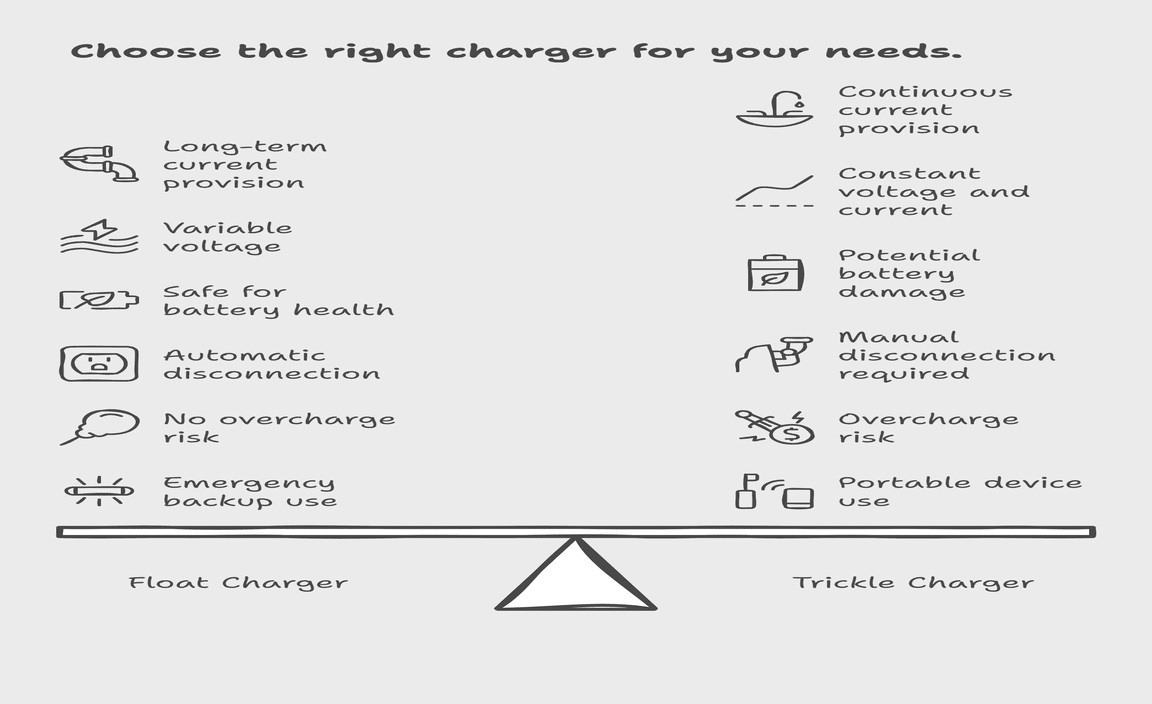
Frequently Asked Questions
Will a Float Charger Charge a Dead Battery?
Well, it depends on the condition of the battery. To start the charging process by a float charger, the battery must have a minimum voltage, so that it recognizes that it is connected to a battery. If you are talking about a dead car battery, we will recommend using a true battery for most of the charging, then use a float charger.
How Long Can You Leave Your Battery With a Trickle Charger?
Technically, you should never leave your car battery with a trickle charger when it is charging. To get the best battery lifespan when you are using a trickle charger, you should connect and disconnect the charger from your battery at a regular interval.
What Is the Difference Between Float Charging and Boost Charging in a Battery?
The voltage and current are not constant with the float charger. Because this charger senses the battery’s condition and reduces the charging current. Also, the float charger uses low voltage and current and charges slowly. On the other hand, the boost charger charges the battery pretty fast with high voltage.
Conclusion
Float charger works with advanced circuitry and has got other features that care about the battery’s health. On the other hand, a trickle charger keeps charging your fully charged battery and might cause irrecoverable damage. Even though these two chargers have lots in common, in the battle of float charger vs trickle charger, a float charger is more preferable.
Resource:
- battery health and maintenance tips: https://www.familyhandyman.com/article/battery-maintenance-tips/
- different types of battery chargers explained: https://www.autobatteries.com/en-us/battery-knowledge/charging/charging-basics
- how to charge your battery safely: https://www.energy.gov/eere/vehicles/articles/charging-your-electric-vehicle-home
-
reliable backup power sources: https://www.consumerreports.org/electric-generators/portable-generators-and-backup-power-systems/


